One of the best outdoor activities in Arizona is hiking, but since it can get extremely hot for several months of the year, it’s helpful to have some water on hand or at the end of your journey. When it comes to hiking near bodies of water, Arizona has no shortage of gorgeous streams, lakes, springs, or waterfalls. The majority of these walks can be completed year-round, so you don’t have to wait for summer to enjoy these water adventures (though it might be too chilly for swimming!). Hiking always seems nicer to me when there’s a reward of some sort, and rivers or waterfalls always make a strenuous hike worthwhile!
Read on to learn more about some of Arizona’s best water hikes and plan your next hiking adventure!
1. Seven Falls, Tucson
Undoubtedly one of the most well-liked treks in the Tucson region, Seven Falls consists of, you got it, seven waterfalls that drop into a spacious pool beneath. Seven Falls is quite beautiful and the pool below is very pleasant after the climb to get there. The water may be low at some seasons of the year to the point where the waterfalls aren’t much more than a trickle.
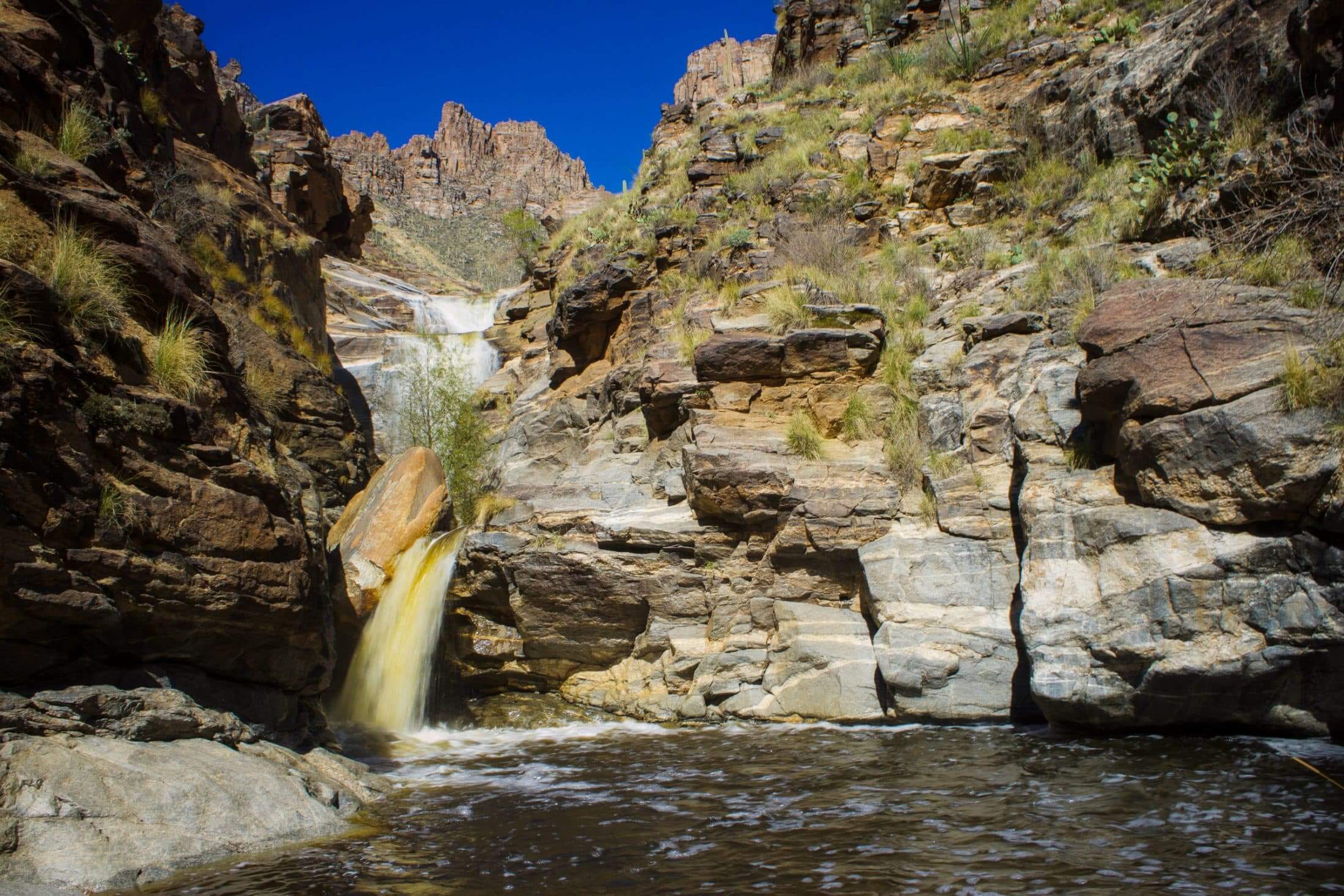
Depending on where you start, there are different ways to get to the falls on the trip. You can hike the remaining distance straight from the visitors centre, or you can take the $6 hourly shuttle that leaves from the Sabino Canyon visitors centre, which skips the first two miles. You’ll get a great perspective of Sabino Canyon and some of Arizona’s most breathtaking desert vistas from either path.
2. Water Wheel Falls, Payson
Water Wheels Falls on Ellison Creek, which is located just outside of Payson, is another well-liked location, particularly for residents of the Phoenix Valley. This region of the Tonto National Forest, often called “Rim Country,” is tucked away at the base of the formidable Mogollon Rim. It’s a popular getaway during the sweltering summer, and a cool swim in Ellison Creek is an added benefit.
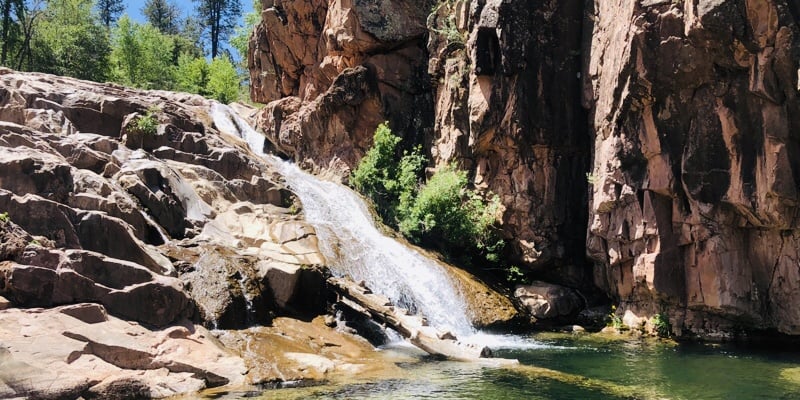
Water Wheel Falls, so named because of the water wheel that formerly operated on the creek to power a mill, is a lovely and serene location, but it can be perilous during the monsoon season as flash floods can suddenly burst through the small canyon.
3. Cibecue Falls
At over thirty feet high, this picture-perfect waterfall becomes a gorgeous chocolate brown colour after heavy rain. Swimming is not permitted directly beneath the falls, but because you will be crossing Cibecue Creek multiple times en route to the falls, you are welcome to swim there.
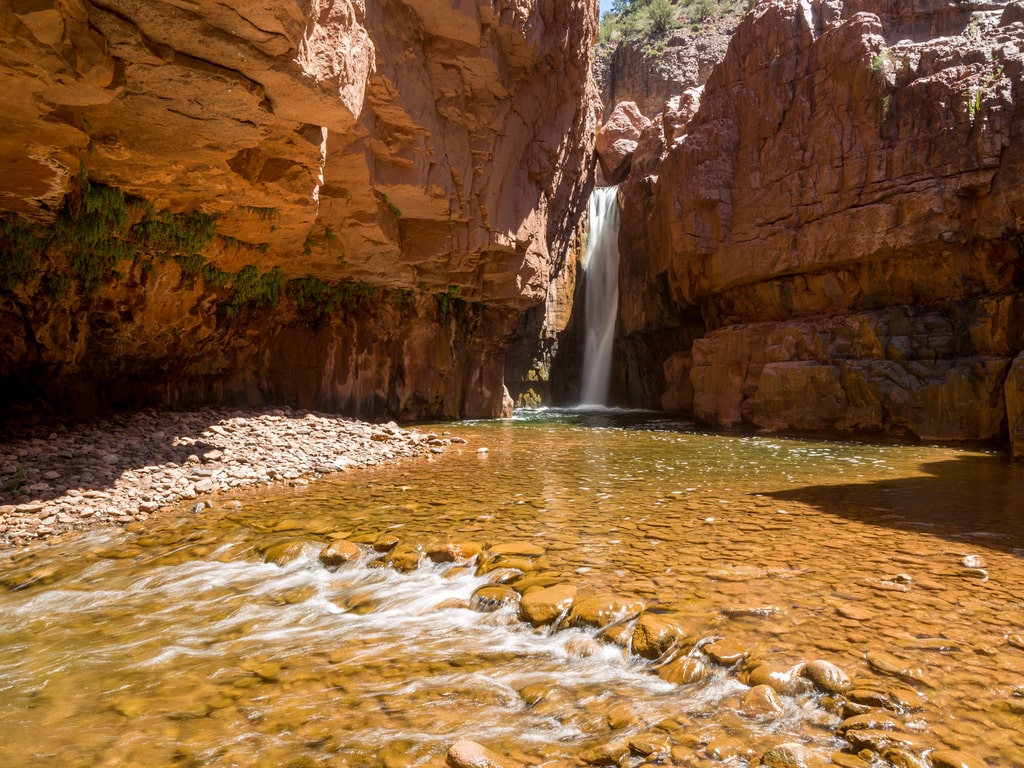
It requires a longer road travel from Phoenix to the trailhead than other walks, so allow a full day for the journey. Additionally, you need to obtain a permission beforehand, which you can easily do so online before you leave your house. To pay the money and print your permission, go to the official website. Since Cibecue Falls is situated in a narrow gorge, it is not feasible to go farther than the falls. Additionally, you ought to check the weather in before because a flash flood in that canyon could be disastrous! As long as you camp in approved places, you can camp for free close to the trailhead.
4. Fossil Creek
There are several possibilities for shorter or longer hikes on this very well-liked water hike that is close to the Mogollon Rim, between Camp Verde and Strawberry. To prevent overcrowding and protect the vulnerable wilderness region from activities such as off-roading, off-trail hiking, and camping in non-designated locations, a permission system has been put in place. Make sure you have a permit in advance!
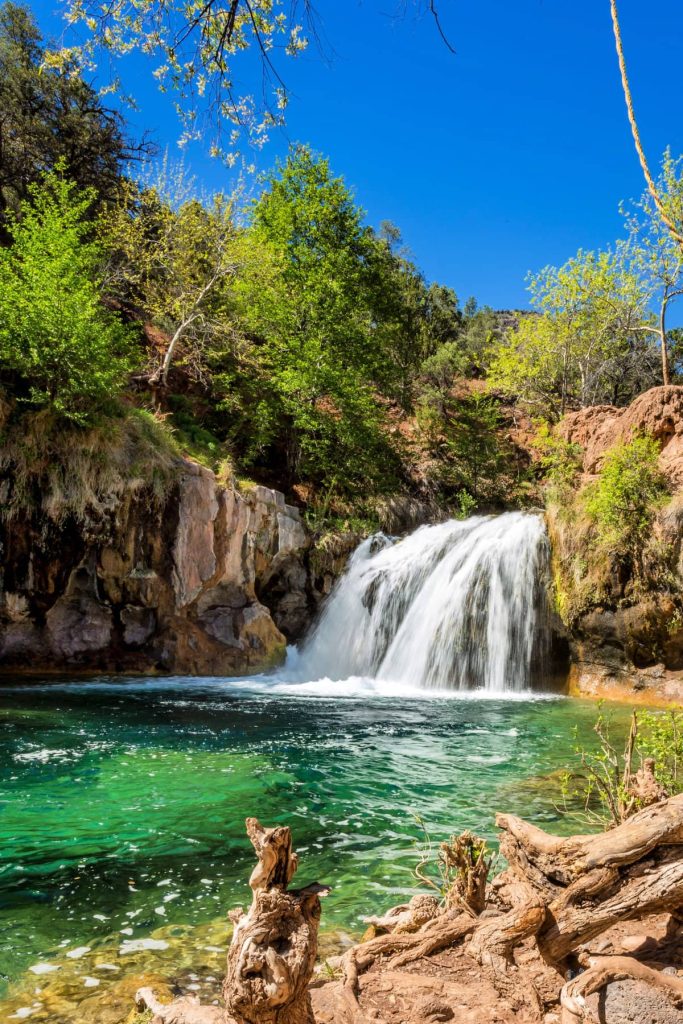
This area has been preserved as a true wilderness and is protected as such. Natural springs that erupt from the earth feed the creek, providing it with refreshingly cool and pure water—though, for your own safety, you should always filter before consuming. One of the best summertime activities is swimming below the 25-foot Fossil Creek Falls on a hot day.
5. Salome Creek (The Jug)
Since you’ll spend most of the trek in the stream rather than along it, this is a true water hike. Depending on the season, the water may be murky and sluggish or clear and flowing. Hiking The Jug requires a bit extra preparation as well because, at the end, if the water isn’t deep enough to leap, you could need repelling gear.
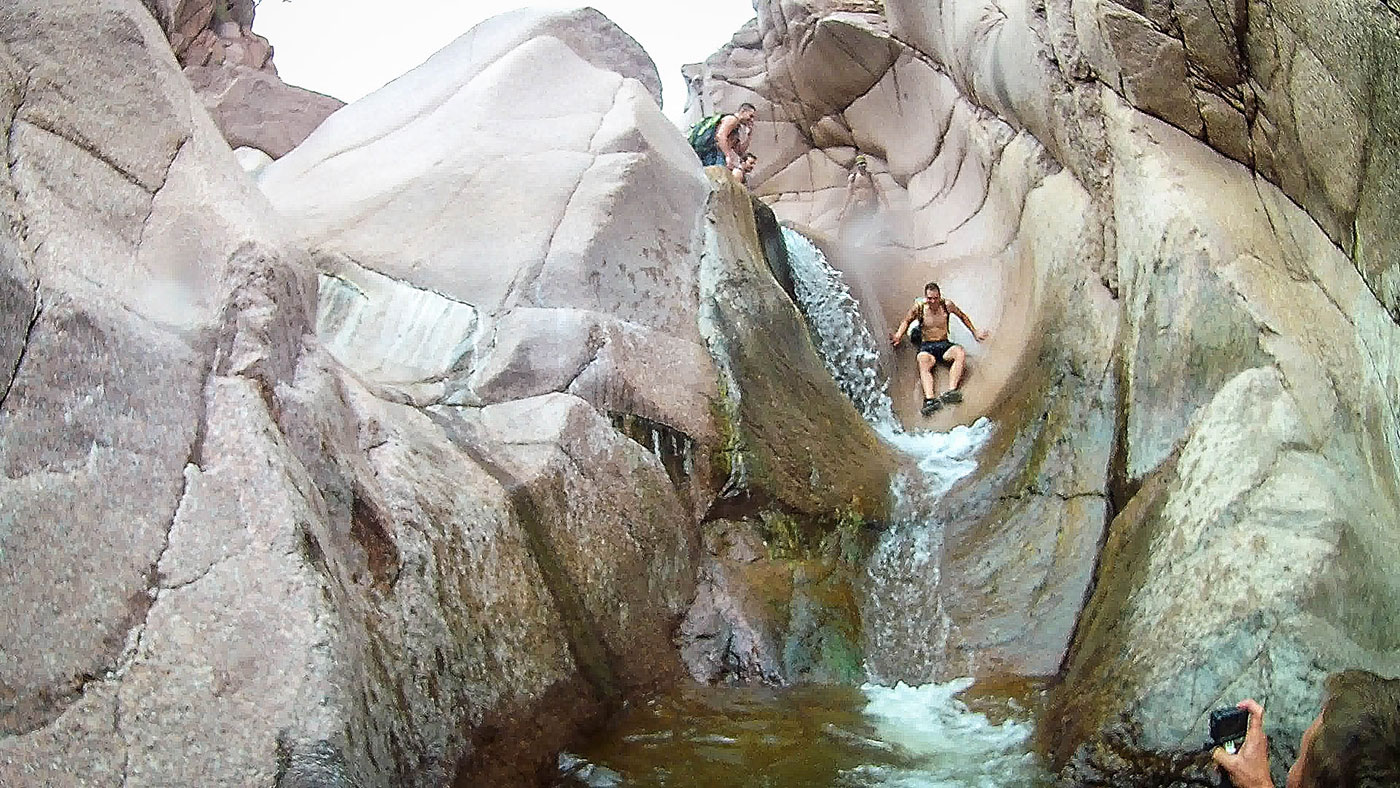
You will spend the next mile or so in the water after making your way from the parking area down into the canyon. In some places, you can be swimming depending on the water flow. Wearing durable water shoes, clothing that may get muddy or wet, and some sort of waterproofing for your backpack and equipment are all beneficial. When the canyon segment comes to a close, there’s a 25-foot waterfall that you can jump from into the pool below, or, for a safer alternative, you can repel down the nearby rock face. Although there are occasionally ropes and hooks available, it is usually preferable to bring your own equipment. Following the waterfall part, retrace your steps down the trail to exit the canyon and return to the parking area. For those seeking a somewhat harder walk, this is an incredibly enjoyable and daring one!
6. Havasupai
Since the invention of social media, many hikers have made visiting Havasupai a top priority on their bucket list. The only ways to get to Supai Village, which is situated on the Havasupai Indian Reservation, are by foot, mule, or helicopter! To camp downstream of the waterfalls and access the canyon, hikers need to obtain permission. And there are some amazing waterfalls!
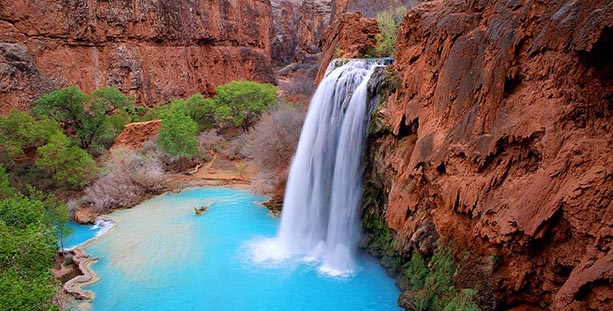
Navajo Falls (dried up in 2008), Beaver Falls, Mooney Falls, Havasu Falls, and Rock Falls all drop into glistening blue-green pools below. Because of the minerals in the water, the name “Havasupai” literally translates to “people of the blue-green waters.
7. Horton Creek
Since the invention of social media, many hikers have made visiting Havasupai a top priority on their bucket list. The only ways to get to Supai Village, which is situated on the Havasupai Indian Reservation, are by foot, mule, or helicopter! To camp downstream of the waterfalls and access the canyon, hikers need to obtain permission. And there are some amazing waterfalls!
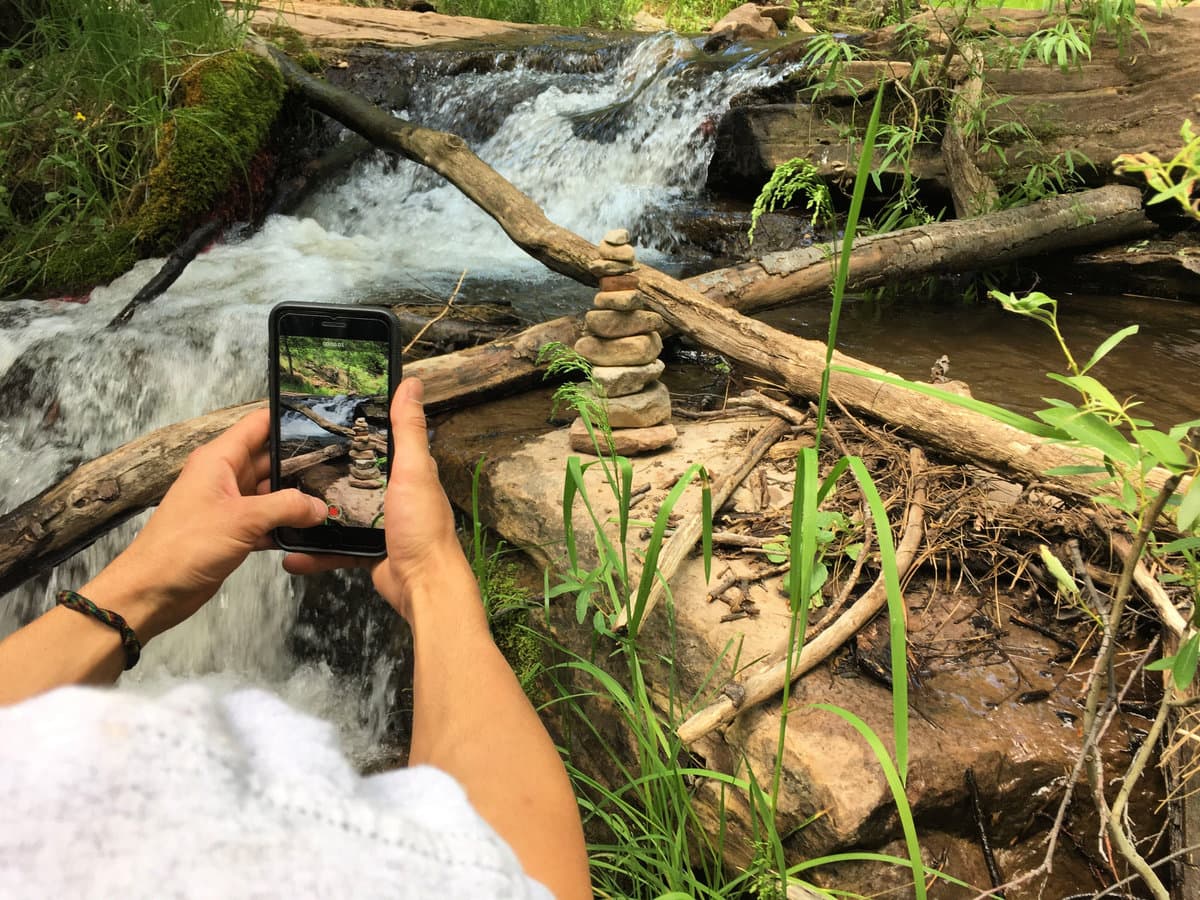
Navajo Falls (dried up in 2008), Beaver Falls, Mooney Falls, Havasu Falls, and Rock Falls all drop into glistening blue-green pools below. Because of the minerals in the water, the name “Havasupai” literally translates to “people of the blue-green waters.
FAQ’S:
Q1: What makes a hike “water-friendly”?
A water-friendly hike typically includes trails that lead to or alongside water features such as rivers, lakes, or waterfalls. These hikes offer opportunities for hikers to enjoy scenic water views and may even provide spots for swimming or water activities.
Q2: Are these hikes suitable for all skill levels?
Yes, the selected hikes cater to a range of skill levels. Some trails are easy and family-friendly, while others may require moderate to advanced hiking abilities. Always check the difficulty level and choose hikes that match your fitness and experience.
Q1: What makes a hike “water-friendly”?
A water-friendly hike typically includes trails that lead to or alongside water features such as rivers, lakes, or waterfalls. These hikes offer opportunities for hikers to enjoy scenic water views and may even provide spots for swimming or water activities.
Q2: Are these hikes suitable for all skill levels?
Yes, the selected hikes cater to a range of skill levels. Some trails are easy and family-friendly, while others may require moderate to advanced hiking abilities. Always check the difficulty level and choose hikes that match your fitness and experience.